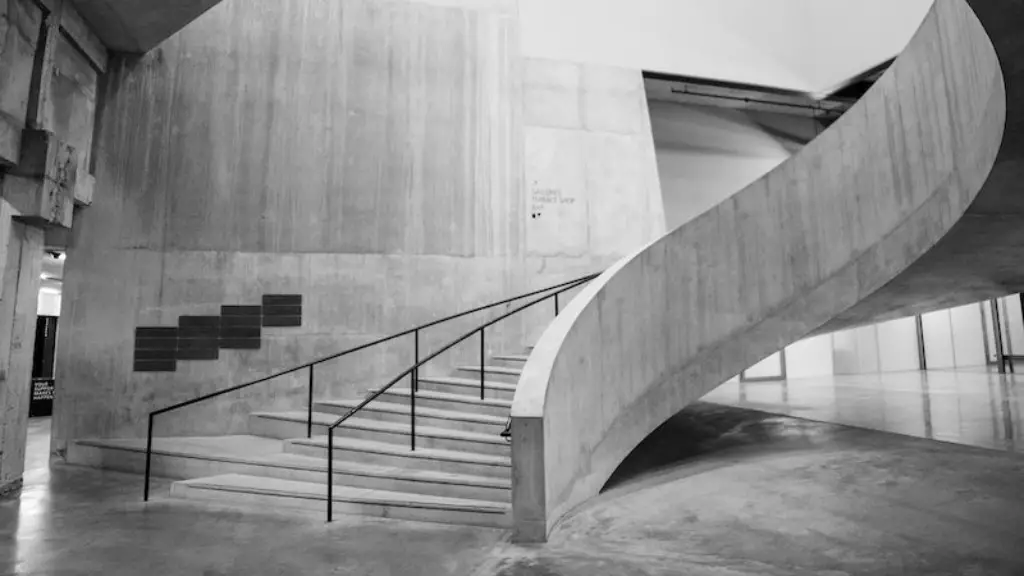Architecture School certainly has its challenges, from mastering drawing and design skills to keeping up with the variety of courses and projects. But is the workload really that difficult? In this article, we’ll explore why attending Architecture School is hard and help you decide if it’s the right choice for you.
The Workload
Designing a building or structure requires a combination of complex math, physics, materials science, and more. That means Architecture School is often quite challenging. Classes focus on both theoretical concepts and hands-on practical techniques.
Within the classroom setting, there are also projects that often require students to apply the information they’ve learned. Depending on the degree program, some students may even be required to work on a thesis project that further expands on the subject matter.
All this work can add up to long hours of studying, which can be difficult for some. Exams also require intense effort, as Architecture School tests may be more difficult than what many other college degree programs require.
Student Experiences
Many Architecture School students report that the workload is manageable – it just takes extra effort. They also say that the extra effort is worth it, as it goes a long way towards helping them reach the end goal of becoming an architect.
Many students also find that the academic experience is enhanced by special seminars, internships and visiting students programs, which introduce them to influential professionals in the field. Use these opportunities to network and build relationships with people who can help you further when it comes to understanding the industry.
It’s also good to know that you’re never alone in Architecture School. Many organizations, conferences, and clubs are available to support you, answer any questions you have and provide an outlet for stress relief.
Expectations
For students who are coming from a non-architectural background or just looking to get started, transitioning into Architecture School can be a challenge. Attending Architecture School requires a lot of dedication, commitment and self-discipline – sometimes more than other programs.
It’s also important to remember that Architecture School isn’t just about work. Interacting with other students and exploring the field is an important part of the journey. Setting aside time for relaxation, social and creative activities will help you stay on track and confident about the material.
Staying Motivated
Staying motivated can be difficult when the workload begins to pile up. Keep in mind that the end result is worth it. Many Architecture School graduates go on to have successful careers in the field and make meaningful contributions to the industry.
Focus on the bigger picture and don’t be afraid to ask for help when needed. Asking questions in class and looking up additional resources can be helpful. Don’t limit yourself to the textbook either – draw on documentaries, books, and websites to gain a wider perspective.
Also, take advantage of opportunities like competitions, conferences, exhibitions and travel grants for a creative charge. Use these ways to bring your knowledge and drive to new heights – every experience can be turned into a valuable lesson or asset.
Personal Reflection
Architecture School isn’t for everyone, but it is possible to overcome the challenge. The workload might seem overwhelming, but it’s important to remember what you’re learning and why it’s beneficial. With the right attitude and resources, great results can be achieved.
Time Management
Time management is key when it comes to keeping up with the workload in Architecture School. While it can be tempting to procrastinate, it’s best to stay ahead of the deadlines. Start each task early and break it into smaller goals, making them manageable and achievable.
Utilise high-efficiency tools like to-do lists and schedule time into your day for studying, reviewing, and practice. Establish a daily or weekly routine for yourself and stick to it. By setting a routine you’ll know exactly what needs to be done and when.
It’s also helpful to take breaks when needed. Listening to music, talking to a friend, or going for a walk can help you refuel mentally and come back to your work with a clear head.
Financials and Practicals
Architecture School isn’t just a theoretical investment, it’s also an investment of your time and money. Many programs put a strain on the finances. Therefore, it’s important to know how much tuition will cost, how much you can borrow, and what expenses you’ll have.
Before attending Architecture School, make sure you have set aside enough money to cover living costs and other needs throughout your studies. You may also want to look for summer scholarships, funding, and educational employment. Utilize these options if available.
Career Prospects
Many Architecture School graduates go on to have successful careers in the field. It’s important to realise that the journey doesn’t end after completing your degree. Architects have to continuously stay in touch with advances in technology and the industry to remain up to date with the latest trends.
In addition, ongoing continuing education is highly recommended. It can help you stay on top of changing regulations, develop new skills, and meet the requirements of an ever-changing industry.
Keeping track of the latest news in the business is also important, as it can provide additional knowledge, new ideas, and even jobs. Joining professional organizations is one way to stay in touch. There are also publications and newsletters, as well as blogs, that can act as valuable resources.





